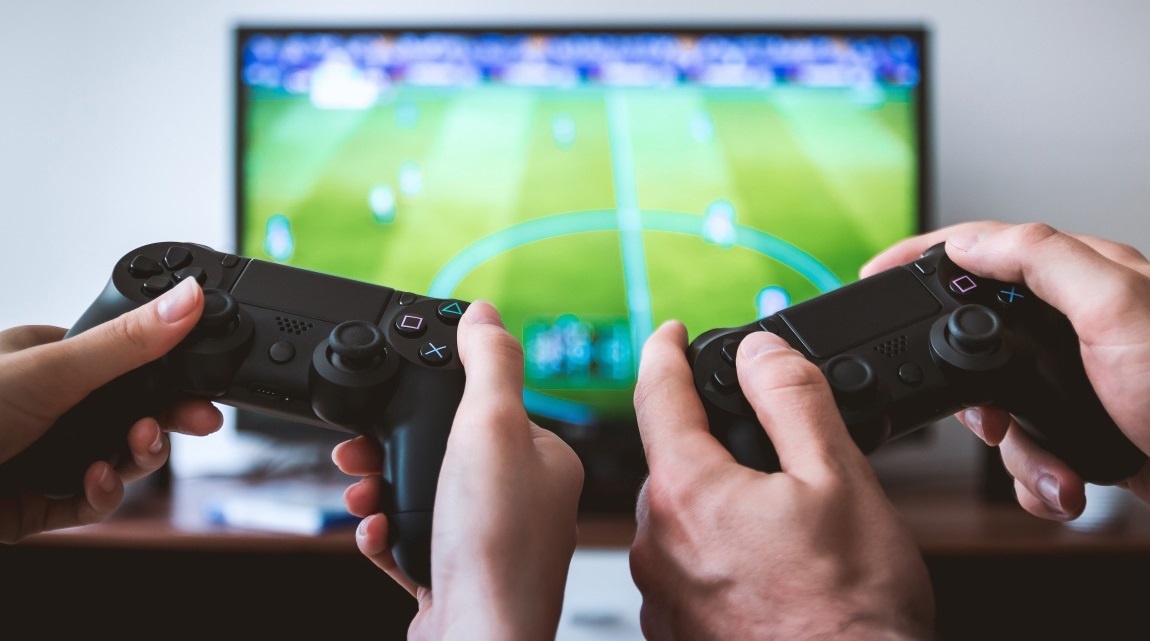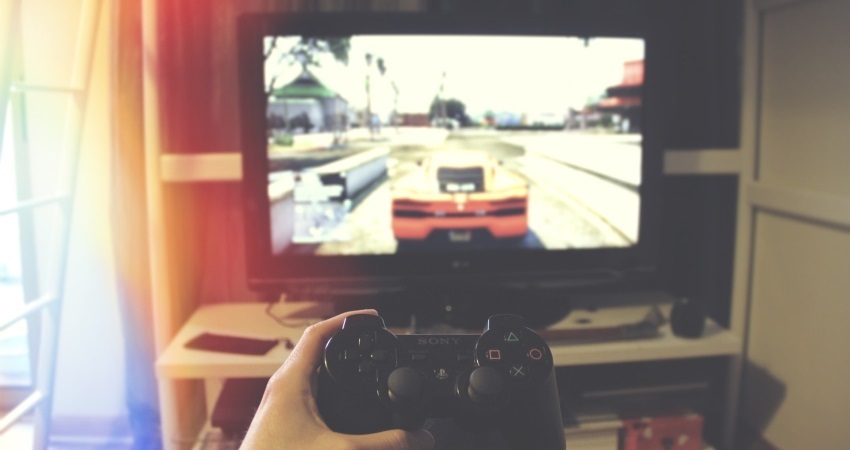What a gaming TV is and why you should get one
Casual gaming has become one of the most popular passtimes of today, and there is no evidence to suggest that this hobby is going anywhere soon. One of the most essential components to this popular pastime is your home television system. These, however, suffer from one serious disadvantage when compared to computer monitors - high input lag. To learn how the gaming TV solves this issue, and what else it brings to the table, read on below.

- What is a gaming television?
- What is input lag and how does it affect gaming?
- How game mode combats input lag
- Gaming TVs vs. Gaming Monitors
- What else can a gaming TV do?
- Is a gaming TV worth getting?
What Is a Gaming Television?
A Gaming TV is a television that has a specialised game mode. The game mode combats one major problem that most TVs suffer from - high input lag. This makes the TV suitable not only for watching TV and movies, but also for playing console games. Each manufacturer might name their game mode something different - for example, Samsung sometimes includes it as "Gaming Mode" in their television's settings, and other times just as "PC". Other manufacturers, such as LG, Sharp, Sony or Panasonic, usually require some of the individual image settings to be changed to a "Game" function.
What Is Input Lag and How Does It Affect Gaming?
Input lag can also be called input delay. It indicates a passing of time between a signal being sent from the player to the console, and the action appearing on the screen. For example, this could be the time between clicking your mouse button and the moment you see your character's weapon fire on screen. The number of signals being transferred to the screen at the same time also acts to increase input lag times. However, most of this makes a negligible difference in comparison to the screen's ability to process the signal quickly. Input lag exists in all imaging devices, including the gaming TV, so it is not yet possible to decide between models based on its existance, but we must look at the amount of lag a television has.
Input lag is measured in milliseconds and the higher it is, the worse for the player. When it gets too high, the player will experience a noticeable delay. This does not only make for an unpleasant gaming experience, but it can also be a major disadvantage in multiplayer games.
How Game Mode Combats Input Lag
Manufacturers are always striving to make sure their televisions produce the best picture. This has had the side effect of making input lag fairly commonplace in modern TVs. Most modern televisions are supplied with the electronics and processing power necessary to easily display images overlayed with SMART functions and various image enhancements such as, for example, HDR.
While these enhancements have a positive effect on image quality, they require processing power to function which, of course, increases the input lag. Since gaming monitors are simpler devices in this respect, their input lag is significantly lower. The best models have a lag count of mere milliseconds.

In "game mode", image enhancements are deactivated, dramatically reducing the processing time that forms a significant portion of the input lag. A gaming TV can reduce its lag by 80 percent or more, which could result in the difference between 70ms and 14ms. However, although this is an example of a very good 4K television, it's still no match for a computer monitor.
Gaming TVs vs. Gaming Monitors
Though we may be comparing them here, gaming televisions and monitors are not in competition with one another. Each of these devices has a different target market and holds a different function. Gaming monitors generally have smaller dimensions and must be connected to the computer because they rarely have smart features or Internet connectivity. On the contrary, modern smart TVs take advantage of these features. They also normally have larger dimensions, so they can't be beaten when it comes to watching movies or playing games from the comfort of your living room couch.

The market partition between gaming TVs and monitors is even simpler: if you want to play competitive games such as Counter-Strike, the gaming monitor is a necessity. If you're looking for a device that will provide you with an uncompromising movie experience, while allowing you to play console exclusives and multiplayer games with your feet up, you want a TV.
What Else Can a Gaming TV Do?
If you're going to make a gaming television the centrepiece to your living room, it must have functions outside of just low input lag. Manufacturers are well aware of this and game modes have been implemented in a whole range of TVs so you can find your basic gaming television and much more among high-class OLED models. Unfortunately, manufacturers rarely specify input lag among their TVs' specifications so you will usually have to look for reviews elsewhere.
Distinction
We are skipping over dimensions here as this topic is purely subjective. When explaining the function of a gaming TV, resolution is the most prominent feature. Today, the two most common display types are Full HD, which is slowly but surely dying out, and the higher 4K display, which is the prime player going into the near future.
Modern consoles such as the Xbox One X and PlayStation 4 Pro are designed to play in 4K, so it would be a shame not to use them to their full potential. 4K resolution TVs contain four times the number of pixels that Full HD contains, making the picture significantly sharper.

HDR
HDR, or High Dynamic Range, is a technology that dramatically increases the contrast capabiliies of televisions. Contrast is the difference between the highest and lowest levels of brightness that a television is capable of. After applying HDR, the image is more vivid, and although HDR may have a negative effect on input lag, it is worthwhile for some games to have it turned on. Both HDR and a wide colour gamut (WCG) are supported by Gran Turismo Sport, for example.
Refresh rate
The refresh rate is the speed at which the gaming television is capable of displaying images on the screen. Typically, you will find 50Hz to be the norm, which can be confusing as the gaming display standard is 60fps (frames per second). The refresh rate of your TV, however, is derived from the standard analogue television broadcasting channel in your region. In Europe, that standard is PAL. A 60Hz signal is unlikely to function properly on your PAL TV, although many 60Hz devices will automatically adapt to your televisions specifications.
Is a Gaming TV Worth Getting?
Game mode is a feature that most high-quality new TVs have. This is not a parameter that we would recommend buying a new TV specifically for, but it is a parameter to watch out for when you are shopping for a new TV. It can enhance your gaming experience and have a decisive impact on your success in multiplayer games. From that point of view, finding a good gaming TV will definitely pay off.
